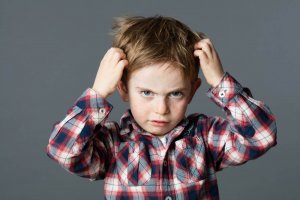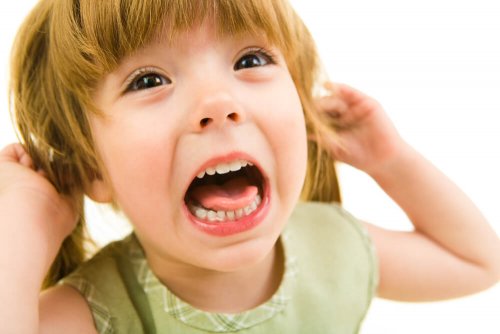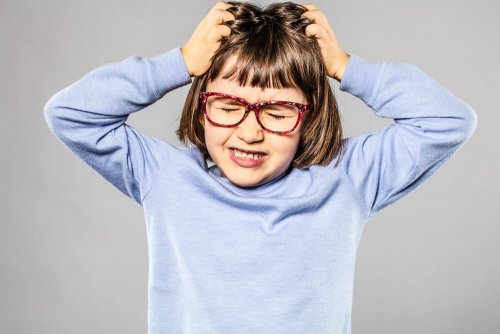Trichotillomania in Children

Some people feel the urge to pull out their own hair. The physical consequence, which is immediately visible, is hair loss that may lead to bald spots in the head, eyebrows, and eyelashes. Trichotillomania in children is a worrying disorder.
However, it’s important to rule out other diagnoses first (such as hair loss due to alopecia areata) or other dermatological issues that may explain the patient’s bald spots.
What Trichotillomania in Children Looks Like
- 0.6 to 6% of children suffer from trichotillomania.
- Children between the ages of two and six are more prone to suffering from it.
- The younger the patient, the better the prognosis.
- The most affected body part is the head, especially in the frontal, parietal, and temporal areas. However, trichotillomania in children may also affect other body parts such as eyebrows, eyelashes, armpits, or even the genital area.
- After young patients pull out their hair, they usually play with it. Many choose to make a small hair strand into a ball they can play with. Others like to put it in their mouths, and some decide to break the hairs into smaller pieces. Others simply pile them up and then throw them away out of fear of being punished.
- However, other times, this disorder is associated with trichophagia, which is compulsive hair eating. Besides making the whole issue more severe, it can lead to many different digestive complications that range from bowel obstruction to nausea and vomiting.

Age of Onset
If the issue manifests in the first years of childhood, it tends to develop before the age of two or from three to four. During that stage, hair pulling is a habit to the child, such as thumb sucking. This is because they’re unaware that it’s a compulsive behavior.
Time of Onset
Usually, hair pulling manifests during family conflicts (parents who’re getting a divorce, splitting up, or arguing a lot). But children may also do it in bed when they’re bored or tired. That’s why it’s so important to stimulate children so that they don’t develop mindless habits that harm their physical and psychological health.
In adults, this disorder can result from stressful situations or anxiety. It can manifest as the “automatic” subtype, which is the case of 75% of patients, and they do it out of tiredness, boredom, or during sedentary activities (watching TV, driving, studying, etc.).
Thus, depending on the degree of awareness during this hair pulling, there are two types of patients: those who’re more aware and show more compulsive behaviors in times of emotional distress and those who do it automatically, possibly during sedentary activities.
Causes of Trichotillomania in Children
Psychological, genetic, biological, and environmental factors may play a role in the manifestation of this condition, and they range from person to person.
Thus, a child whose parents suffered from it is more likely to suffer from it as well. This may be due to an excess of a certain neurotransmitter. It can also be the consequence of external variables, such as family conflict, stress, depression, or a state of emotional deprivation.

Diagnosis
In all cases, bald spots may lead to isolation or self-consciousness. Plus, severe dermatological or infected lesions may appear in the spots, which can be extremely dangerous. That’s why it’s so important for parents to detect trichotillomania sooner rather than later.
Along with uneven hair, these children may have bowel obstruction, discomfort, or stomachache. Furthermore, it’s common for them to deny that they pull their own hair. They tend to feel more stresses as they pull their hair, meaning they may engage in other self-harming habits.
Treatment
Trichotillomania in children usually disappears before the child starts school. To help them with this issue, parents must be aware of the condition.
If your child isn’t improving, your doctor may recommend medication and psychological support through cognitive behavioral therapy. The goal of these last two is to eliminate the habit completely by reinforcing alternative, more appropriate behaviors.
This text is provided for informational purposes only and does not replace consultation with a professional. If in doubt, consult your specialist.








